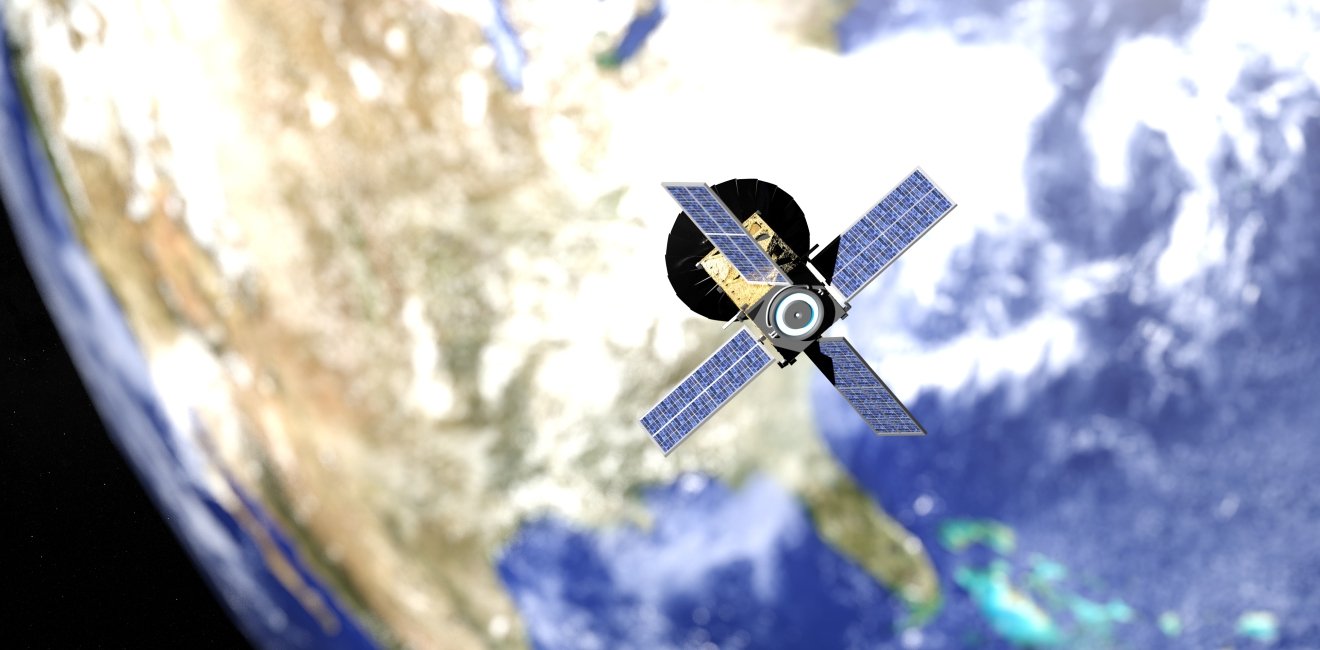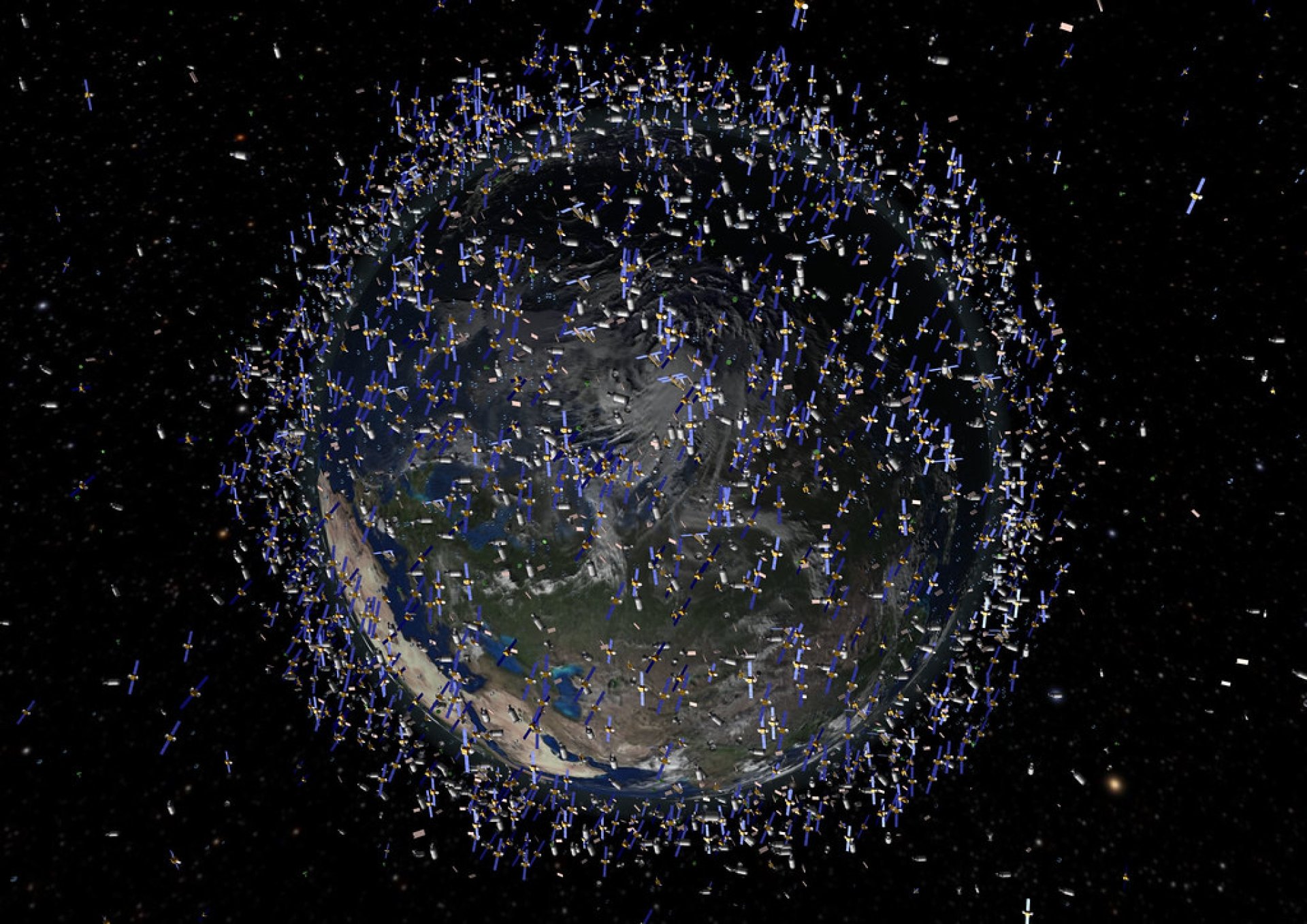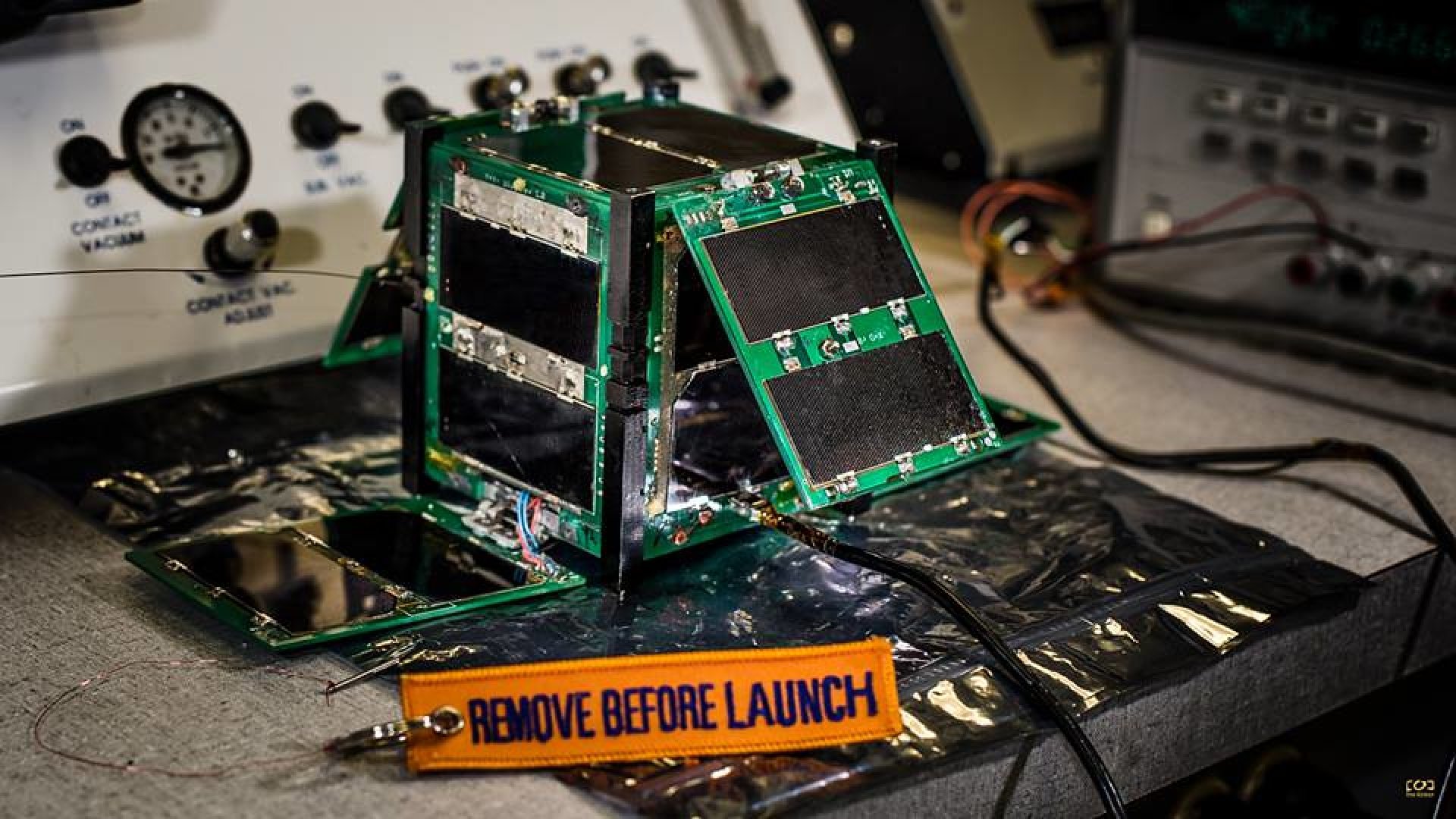What if you could hitch a ride on the next satellite launch? Or float outside the Earth's atmosphere on a balloon, as students in South Africa have done? Not physically, of course, as some galactic hitchhiker; but by peeking through the lens of a satellite that is no larger than a laptop computer. That is exactly what students, small countries’ space agencies, citizen science groups, start-ups, and hobbyists have been doing through a class of satellites called CubeSats.
CubeSats are a class of satellites, whose development began in 1999 with the intent of making space science accessible to education. Unlike historically prominent satellites—large in size and expensive—CubeSats are small and low-cost. CubeSats are the Hubble and Landsat's boxy diminutive cousins, with a standardized sizing system of a 10 cm3 unit. Their design has made them particularly impactful by broadening participation in space, providing hands-on educational opportunities, and enabling innovative, exploratory space research.
CubeSats are more accessible to users beyond government agencies and commercial industries, who have historically been leaders in satellite development and launch. These new users include universities, small countries’ space agencies, citizen science groups, start-ups, hobbyists, and even artists. CubeSats’ role in broadening participation in, and consequently expanding access to space exploration, has a variety of benefits for science and society, including:
- Improved science, technology, engineering, and math (STEM) education: CubeSats provide students with hands-on learning opportunities in aerospace engineering. In addition to being a professional development opportunity, Dr. Zac Manchester described the benefit as “a different level of engagement [from students] when the thing you build is going into space” (Building Blocks for Better Science).
- New types of research: Standard satellites are expensive and take a long time to build. For this reason, they typically are used for low-risk missions. CubeSats, on the other hand, can be used for exploratory, high-risk research—such as NASA’s studies of bacteria genetics in space and deep space exploration—because of their inexpensive and quick development.
- Accelerated innovation: CubeSats enable new users from across different disciplines to contribute their ideas and unique skill sets to small satellite design. With both more participants and more diverse participants, solutions to challenges in space and on Earth can be faster and more creative.
- Public engagement: CubeSats’ accessibility allows members of the public more autonomy over the research questions they address. For example, citizen scientists use CubeSats to conduct experiments of interest in space, including those that broaden our understanding of Earth. The opportunity for the public to engage with and shape research agendas can strengthen the connection between science and society.
CubeSats have broadened access for many different groups of people, giving the opportunity of space exploration to new players with new ideas and research that might otherwise not be explored. However, CubeSats’ growth also exposes current challenges, and creates new ones.
Looking Forward: The Future of CubeSats
Challenges
The exponential growth in the number of CubeSats launched over the years, in addition to an overall increase in activity for other space systems, brings new challenges to the space environment. These challenges include:
- Orbital debris: CubeSats have a relatively minimal debris impact because of their size. However, there are over 50,000 objects between 1 cm and 10 cm and more than 100 million objects less than 1 cm that are not being tracked in space, potentially causing collisions with other space systems and crowding the space environment. CubeSats can both be impacted by orbital debris or add to it, in part because CubeSats have a 25 year deorbit guideline, despite their short missions. Even inactive CubeSats remain in orbit and continue to pose a risk to other space systems.
- Radiofrequency spectrum management: The radiofrequency spectrum is becoming more crowded at the low frequencies at which CubeSats operate. Even after proceeding with the licensing processes that assign and manage frequencies, CubeSats often experience interference due to crowding. According to a presentation given at the Space Communication and Navigation Symposium, titled “Communication Architecture and International Policy Recommendations Enabling the Development of Global CubeSat Space Networks,” authorities are aware of crowding but have not yet developed a strategy to accommodate it. Developing infrastructure and communication protocols to manage the radiofrequency spectrum becomes even more important as CubeSat constellations or swarms increase in popularity. Currently, there are no regulations to prevent space systems in constellations from individually using a unique frequency—instead of the entire constellation using one coordinated frequency—which can waste limited radio communication resources or add more interference.
- Cybersecurity: Satellites are becoming increasingly vulnerable to cybersecurity threats. With improved capabilities of small satellites and CubeSats, there are many satellites collecting information that may require encryption or other cybersecurity protocols but do not currently do so. The ambiguity and gaps in cybersecurity policy can lead to sensitive data and information not being correctly protected from cyberthreats.
- Rendezvous and proximity operations: As space becomes more crowded and CubeSat capabilities increase, there are more chances of proximity operations, when satellites or other space systems move intentionally into the vicinity of one another. There is currently no clear standard and regulatory process for commercial and non-federal satellites.
Recommendations
Looking forward, the impact of CubeSats is contingent on addressing these challenges in an increasingly crowded and complex space environment.
- Orbital debris: To address orbital debris, NASA has recommended requiring that CubeSats have tracking features and deorbit immediately after their mission. Trackability would help enforce deorbiting at the end of a mission lifecycle.
- Radiofrequency spectrum management: Space communication architectures and technologies can minimize interference in a more crowded spectrum and provide infrastructure for CubeSat constellations. This could be done with a network infrastructure similar to that of the internet protocol (IP), that assigns identification numbers.
- Cybersecurity: Creating cybersecurity standards based on types of data collection or the operation that a CubeSat carries out—instead of based on the owner of the satellite—could address future cybersecurity challenges. For example, encryption requirements for satellites with propulsion and maneuverability could be included in cybersecurity licensing.
- Rendezvous and proximity operations: As CubeSat capabilities grow and space becomes more crowded, authorities should clarify guidance for non-federal and commercial CubeSats with rendezvous and proximity operations. A policy roadmap from The Aerospace Corporation's Center for Policy and Strategy recommends using National Institute of Standards and Technology (NIST) Special Publication 800-53 as a guiding framework.
Cubesat's accessibility has enabled their growth and benefited many different communities and use cases. They have created opportunities for new research and accelerated innovation. However, as space becomes more crowded, it becomes more essential that guidance is clarified and expanded to include unique aspects of CubeSats and small satellites. Ultimately, addressing these challenges will promote the democratization of space, while also bolstering its security and health.











